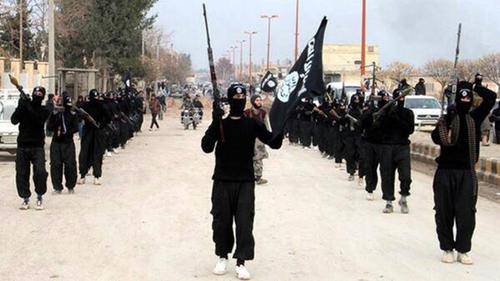
Fears of Islamic State resurgence as attacks escalate in Syria
ISIS attacks escalated significantly in August when more than 35 assaults left at least 76 pro-Assad fighters dead in Syria, marking the largest number of killings since 2017.
According to a new report by the Counter Extremism Project, Homs saw the greatest number of documented attacks with 12, while 10 assaults were reported in Deir EZ Zor, followed by Raqqa with nine.
Experts monitoring the situation have warned the increase in attacks shows the group has now redeveloped a “robust logistical and strategic capability”.
“In August, ISIS militants carried out at least 35 attacks, killing at least 76 pro-Assad regime fighters in the Homs, Deir EZ Zor, Raqqa, Hama, and Aleppo governorates,” research analyst Gregory Waters, of the Counter Extremism Project, said.
“These attacks constitute a major escalation in ISIS’s insurgency. The overall number of attacks, high-quality attacks and reported pro-government deaths exceeded those from any month since ISIS lost control of this region in 2017.
“The more than two-fold increase in attacks compared with previous months in Raqqa is overshadowed only by the more than three-fold increase in attacks in Deir EZ Zor.”
The Counter Extremism Project has been conducting monthly chronicles online in its ISIS Redux: The Central Syria Insurgency on the number of attacks by the terror group in central Syria.
Mr Waters said for eight days straight in August the militant group carried out at least two attacks daily.
“The rate of documented attacks in August is unmatched since 2018,” he said.
“ISIS’s ability to carry out such frequent same-day attacks implies that the group has developed a robust logistical and strategic capability.”
In July the militants had been responsible for 23 attacks, killing at least 29 pro-regime fighters in Homs, Deir EZ Zor, Raqqa, Hama and Aleppo.
“July marked the third month in a row that ISIS carried out at least one high-quality attack in all four provinces in which it is active,” Mr Waters said.
“More significantly, July marked the first month of sustained ISIS activity in regime-held Aleppo province since the terrorist group was expelled in 2017.”
The figures for June saw 14 attacks carried out, killing 26 fighters and represented a “continued geographic expansion of ISIS attacks”, Mr Waters added.
Mr Waters said August’s targeting of Deir EZ Zor, focused primarily in the western urban belt stretching from Deir EZ Zor city along the Euphrates to Ma’adan, marks a new expansion of ISIS activity.
The attacks, which are believed to be from cells originating in Jebal Bishri to the west and Raqqa to the north, culminated in an ambush on August 27 that killed 30 pro-regime National Defence Fighters (NDF), along with the NDF sector commander for western Deir EZ Zor.
“Most of the men killed, including the commander, hailed from the local Busaraya tribe,” Mr Waters said.
“The massacre triggered a massive mobilisation of members from the pro-regime Liwa al-Quds, Qaterji Forces and NDF deploying to the region to conduct their own anti-ISIS operations in lieu of what one tribal fighter told this author was an abandonment by the Syrian army.
“The tribal response triggered by the massacre will most likely push ISIS cells back on to Jebal Bishri where they will hunker down and wait out the operation,” he said.
Their operation, which is currently ongoing, has led to the deaths of two ISIS fighters to date.
Mr Waters has also warned that ISIS’s raid on the T4 pumping station in Homs shows ISIS fighters still have “considerable freedom of movement close to major regime strategic points”.
He believes this month Raqqa, west Deir EZ Zor, and west Mayadeen will continue to be the main targets for attacks.
“While it is unlikely that September will see the same growth or severity of attacks as in August, this month’s trends will likely continue – that is, Raqqa, west Deir EZ Zor and west Mayadeen will continue to be the hotspots for the near future,” he added.
“In Homs, ISIS will continue its strategy of exerting pressure around the city of Sukhnah, no doubt seeking some opportunity to raid the city’s warehouses, while sending out groups to attack regime positions further west, similar to the T4 attack.
“East Hama and south-east Aleppo both experienced a decrease in ISIS attacks in August, partially owing to the formation of local defence militias. ISIS will want to renew its activity in these areas and may take the opportunity to do so while pro-regime forces are so heavily focused on western Deir EZ Zor.”
Source: The National





